After recently discussing some Takara figures from a Monster Fish set (…the Fishing Wars) I thought I’d go into some others. So I am looking at the pair of Asian arowana figures from an earlier Takara Tomy series…also called Monster Fish (!?) but not fishing themed I guess? In fact the theme is pretty loose (the other two figures are deep sea fish…) I don’t actually have those other two, but I do like bonytongue figures.
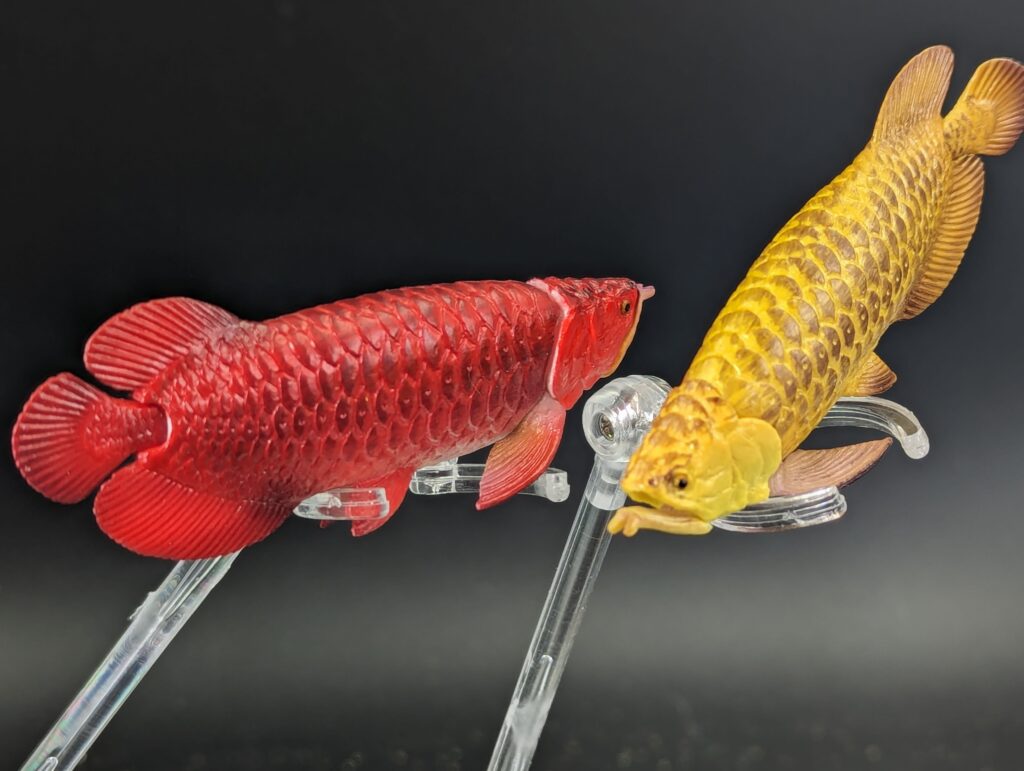
I won’t need to go into too much about Scleropages formosus since I covered most of their details with the two Yujin arowana figures. Or, given the colours, maybe it’s S. aureus representing the gold crossback arowana, and S. legendrei representing the super red morph. Again, assuming that the species separations are valid, which continues to be unconvincing. One thing I didn’t bring up was their breeding habits, but these figures provide an excellent follow up segue into that fascinating aspect of their natural history. And it just so happens to be appropriate for today, since it’s Father’s Day (at least here in Canada, plus several other countries…but it’s different in other countries.)
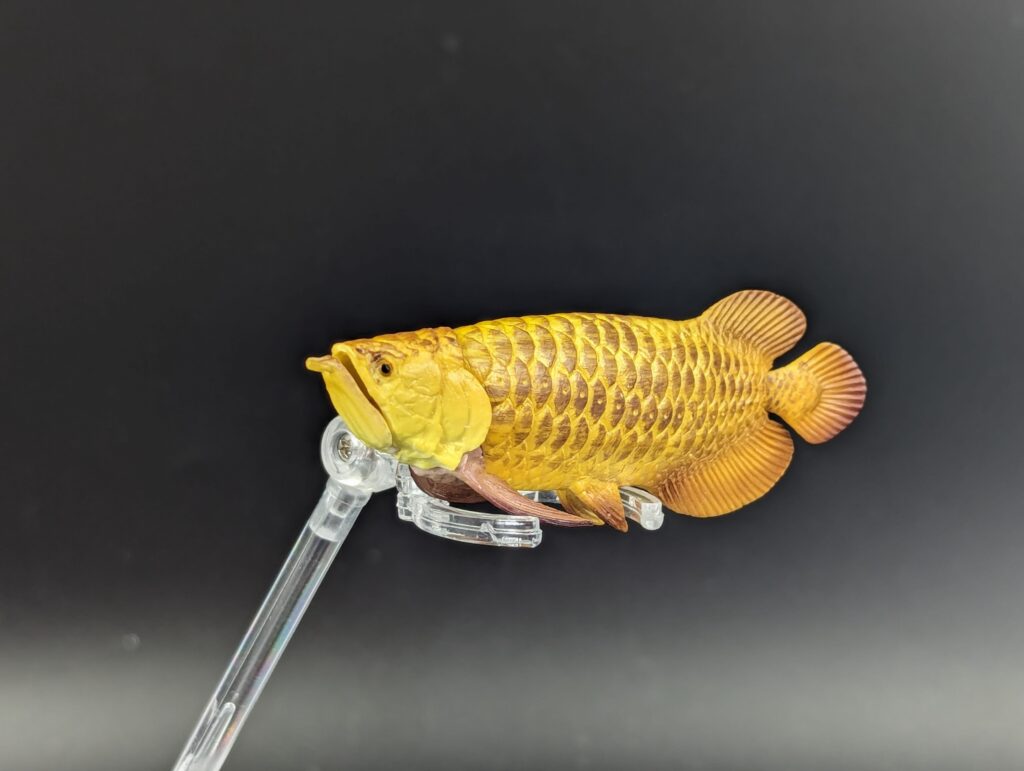
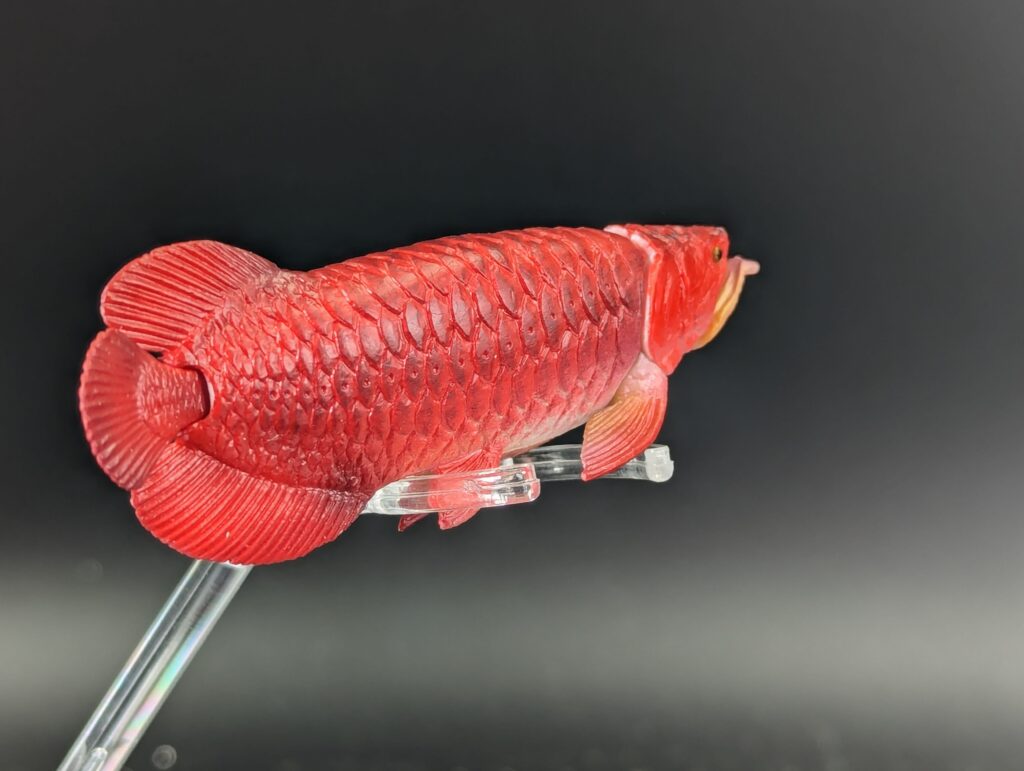
In most arowana species (apparently for all Scleropages and Osteoglossum, the osteoglossids) there is direct rearing of fry; a further quick look indicates that this is is true of at least some other osteoglossiformes (gymnarchids and arapaimids at least) but arowanas have a distinct behaviour. Asian arowana are frequently bred in captivity, where courtship behaviour can continue for weeks, mostly of the male and female swimming near the surface of the water, sometimes side-by-side, sometimes in a circle nose-to-tail. Once breeding commences, the female releases the eggs, which are then fertilized by the male. Once this has occurred, the male scoops up the eggs in his mouth to incubate them for about a week. After hatching, the male continues to rear the fry until their eggs sacs are absorbed, which can take 7-8 weeks, still protecting them in his mouth. In some other osteoglossids, apparently the female does the mouth brooding, but all apparently show parental care.

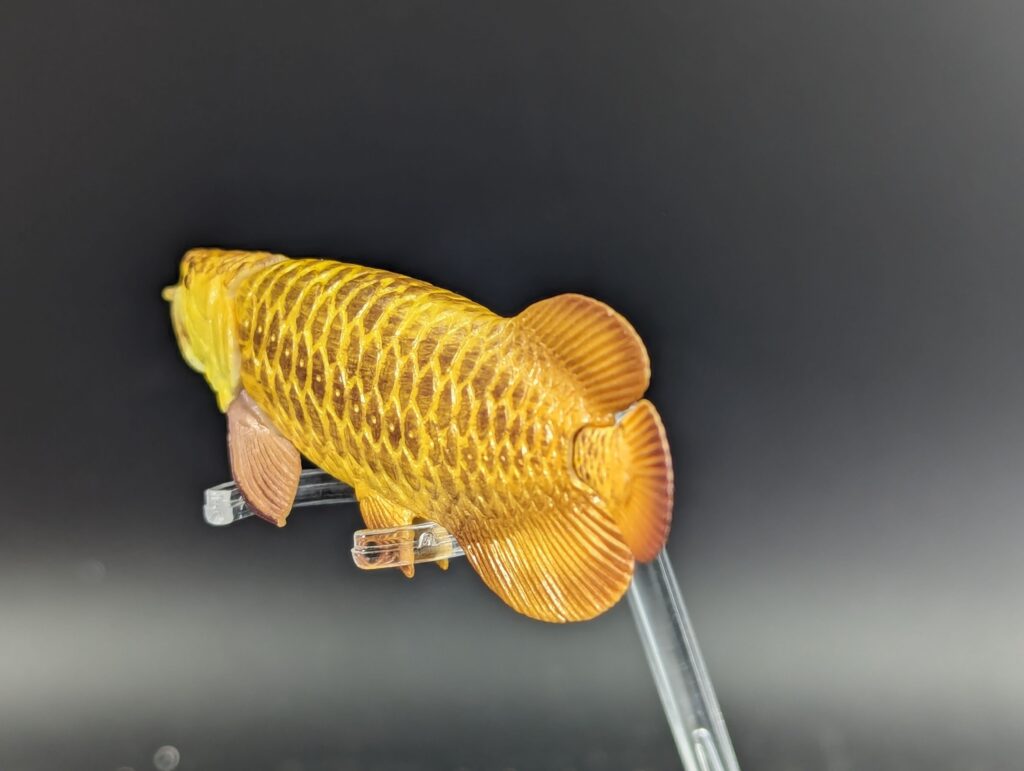
This is relevant to these figures because, unusual to this figure (out of the myriad Asian arowana figures) this is the only one I have (and might be the only one period?) that actually demonstrates this behaviour! As with all Takara TOMY sets like this, these figures are made up of multiple pieces, and features some articulation. In this case, the pieces are the tail, main body, and head+pectoral fins in front of the opercula; the lower jaw is a separate piece within the head. These pieces give two places for articulation–the tail flaps side-to-side awkwardly (kind of a basic one for many Takara fish) and the jaw opens and closes. When it does open we can confirm that these are breeding males–because the mouth opens to reveal a couple of tiny little baby arowanas! It’s such an interesting addition to the figures, definitely makes them stand out a little!

So the figures are multiple pieces, and have an interesting articulation…but how are they as representatives of Asian arowana? I would say that they’re pretty good overall. Compared to a large number of other models, they seem to be quite hefty, really demonstrating they deep body body relative to their length, as would be expected of a breeding adult. They are also modestly sized–a bit bigger than most of the other figures out there (most of which are toob or capsule figures) although of course smaller than the Favorite Ancient Fishes model (and the various recasts and repaints available in the world). They are about 11cm long, which gives a scale of about 1:8 or 1:9 (depends on a max length of 90cm or 1 metre). Either way, a pretty big figure that could be tricky to scale. But it does give opportunity for some detail.
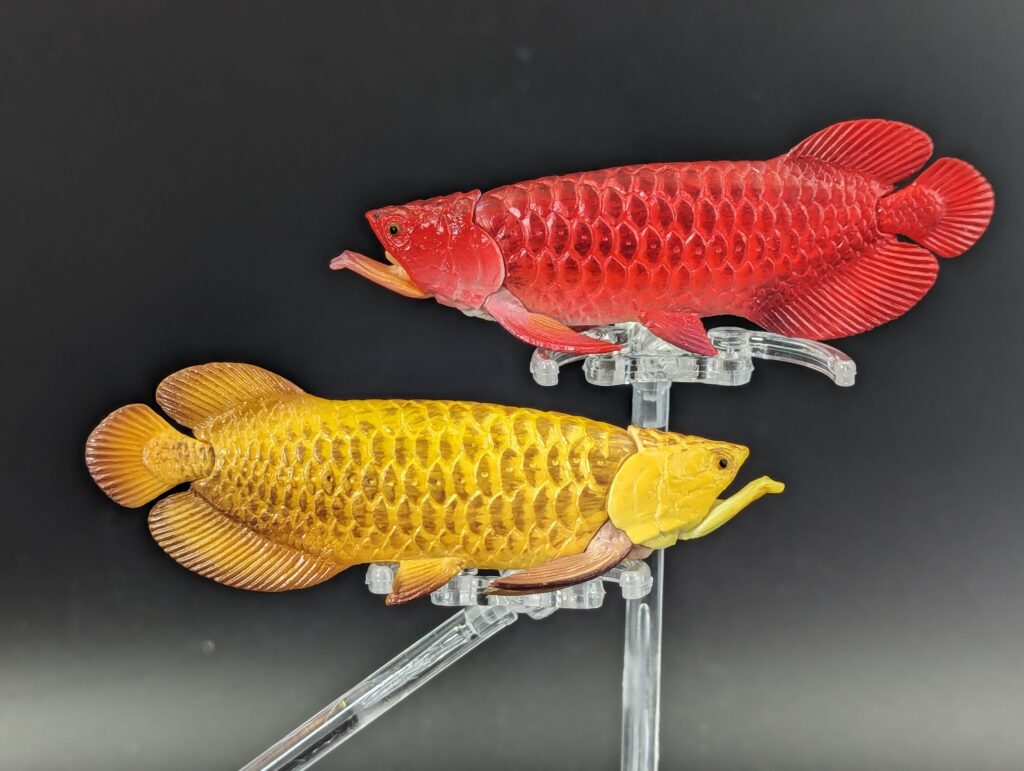
And there is lots of detail. The body is sculpted with prominent scales, largest behind the opercula and gradually decreasing in size to the caudal peduncle. The fins are all sculpted in thinner material which makes them softer and flexible, and the paired fins are held out from the body. The fin rays are also sculpted prominently. The dorsal and anal fins are presented as very large fins, giving a regal flair to these figures, which is appropriate given that the colour choices are the two most popular (and expensive) morphs. The heads are also sculpted with a cap of scales, while the cheeks and opercula are marked by plates with some skin inscription. They eyes are copper and, look appropriately alert and kind of annoyed (it’s an arowana thing). The lower jaw is a thin piece with some folds on the underside, and on the inside the jaw has a distinct pointed tongue, representing the eponymous ‘bony tongue’ used in crushing down prey when eating. There are also the two short anterior barbels jutting prominently forward, the better to sense prey on the water surface. And, of course, the tiny little baby fish inside. There are only two, but in the actual animal there can be several (I couldn’t find a number). Although given the size, maybe they’re older and it’s the last of the young to move out? Or the last survivors. You are free to create your own story.
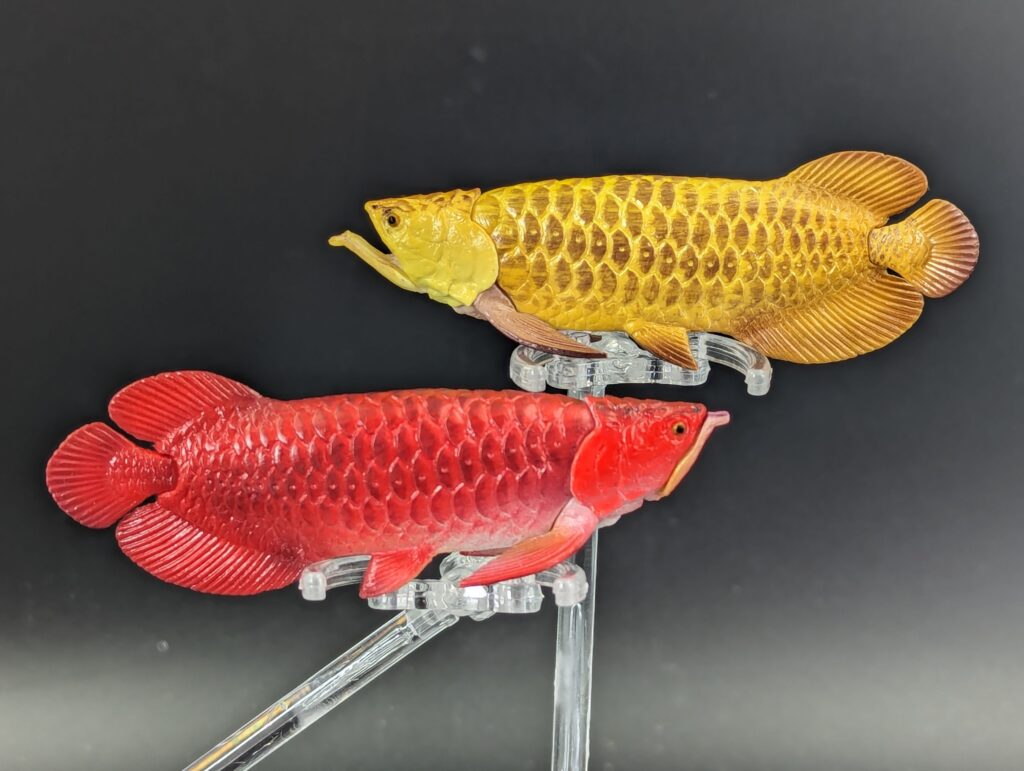
Another thing that makes these figures stand out is the colour choices. Most producers, when releasing Asian arowana figures, will go with multiple colour morphs, and generally some variation of a red and a gold (there are exceptions, like Marmit and Colorata). But for these figures, Takara went full blazing, brightest possible versions! The red morph represents what is likely a ‘super blood red’ based on the incredibly bright red, and the fan-shaped tail. The overall colour throughout is almost a crimson, with a dark red posterior highlight on each scale. The fins are also coloured like this, with just a hint of gold on the pelvic pectoral fins (and inside the mouth).
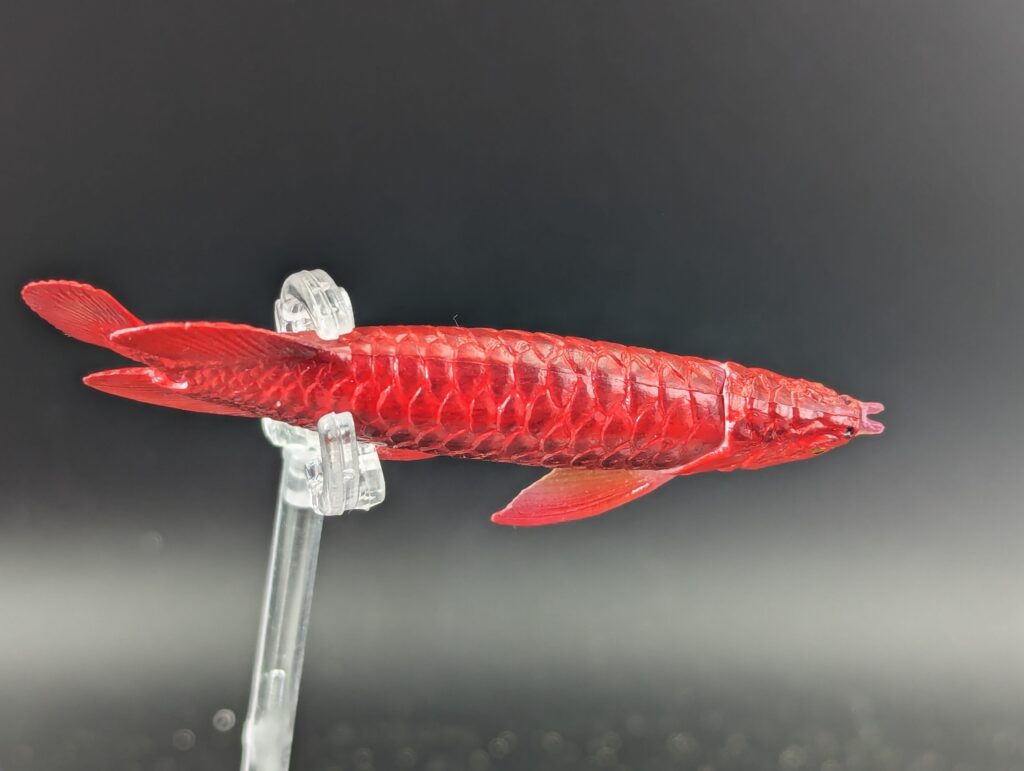
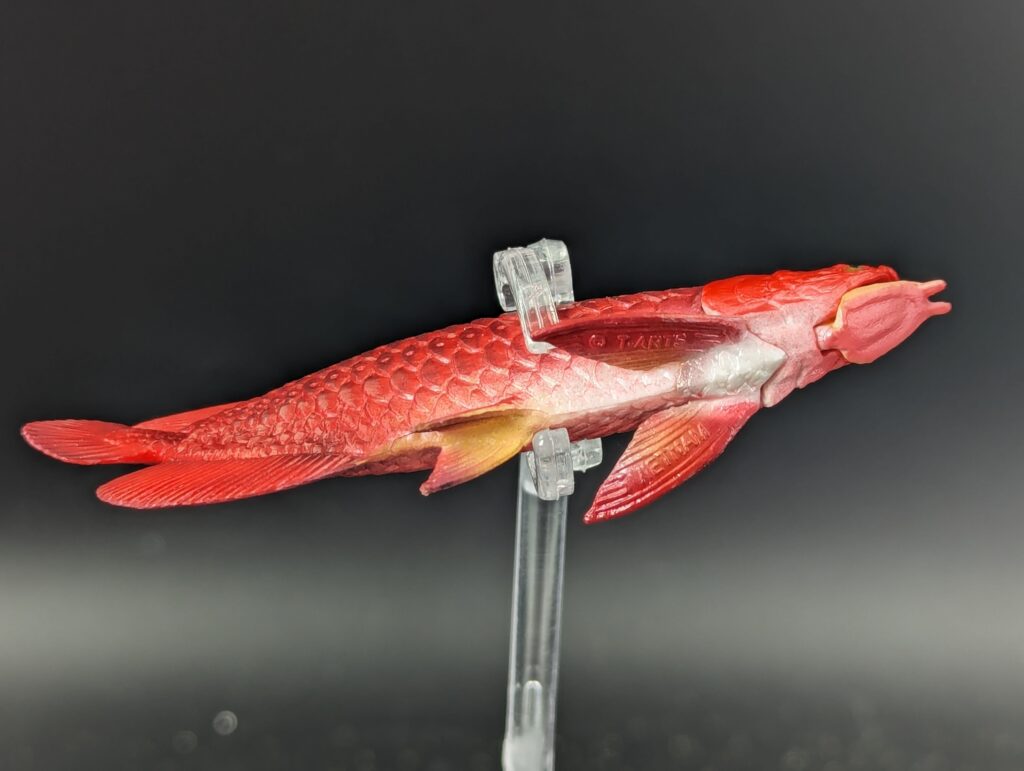
The golden morph is also what would be considered one of the more sought after morphs, a ‘gold crossback’. Unlike the ‘gold highback’ as seen in the Yujin figure, the bright gold extends along the dorsal margin as well down the sides (a highback sees a primarily darker bronze dorsal margin with little gold). As with the red, the scales and body are depicted in the bright yellow gold, with dark bronze highlights on the posterior scale margins and washed on the fins. The only thing it’s missing is the metallic sheen that would normally accompany these fish, but that’s probably a relic of the type of paint used for ‘toys’.
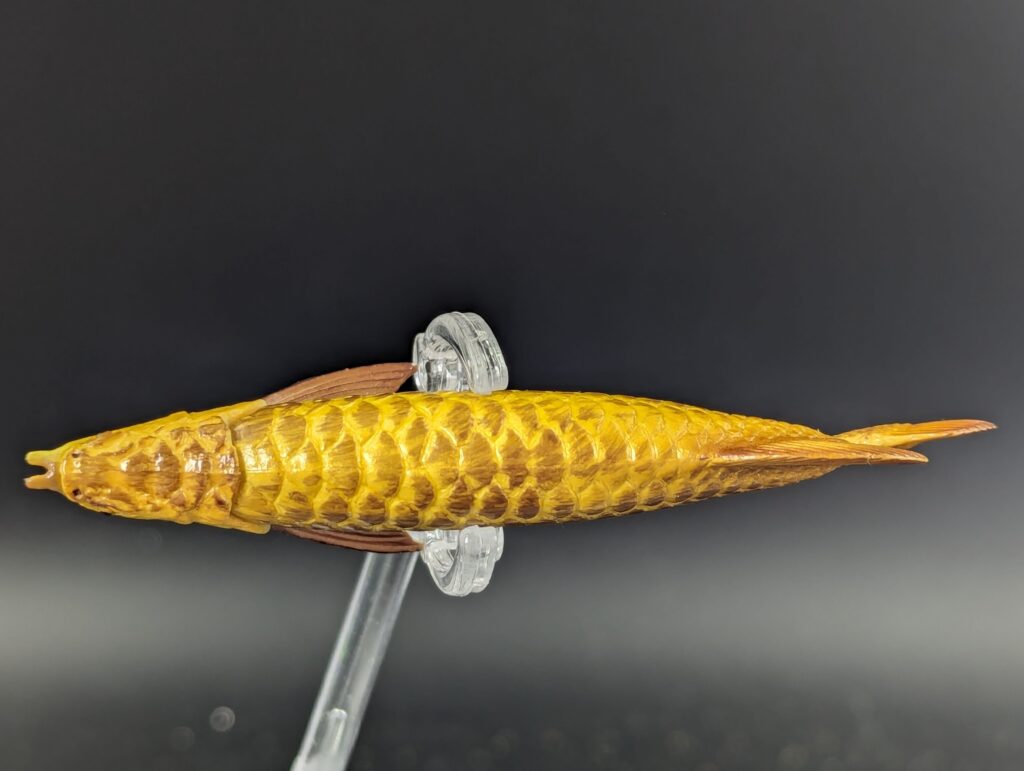

Overall, these are great models of this fascinating fish. They’re just a little larger than what is commonly available, and I think that elevates them a bit, since these fish should look impressive As far as figures go, there are honestly dozens out there…and most are red or gold. But they’re fun, and the joints aren’t too noticeable. They are worthy just for demonstrating their neat breeding habit if nothing else, that certainly elevates these figures a little!

Disclaimer: links to Ebay and Amazon on the AnimalToyBlog are affiliate links, so we make a small commission if you use them. Thanks for supporting us!



